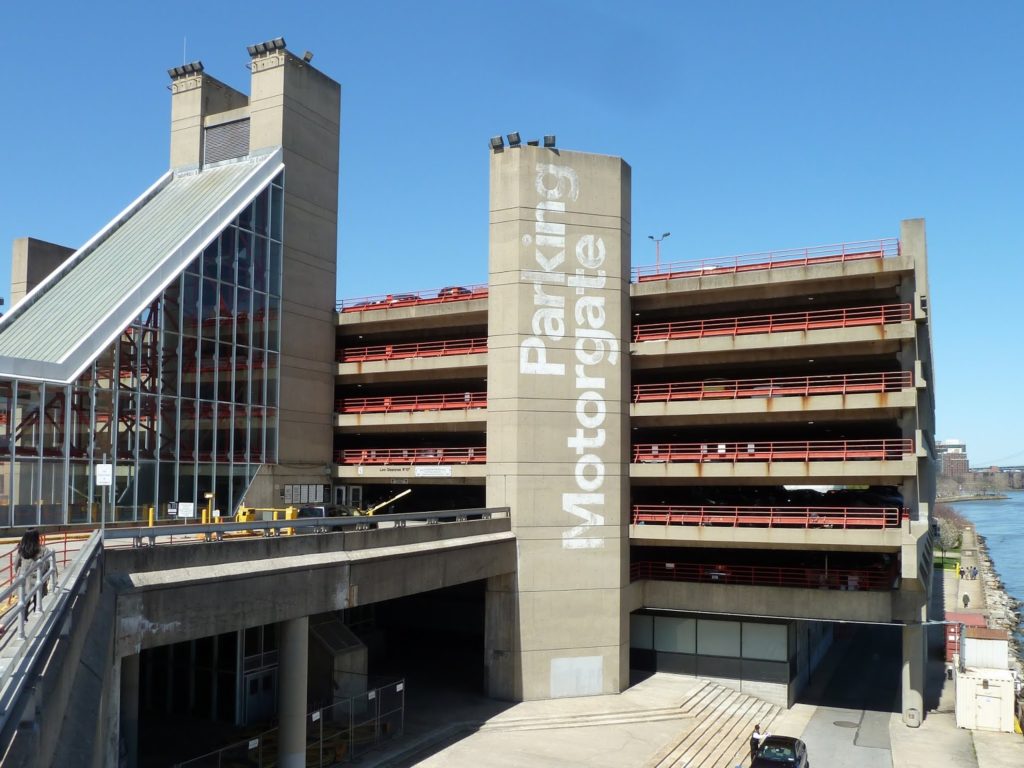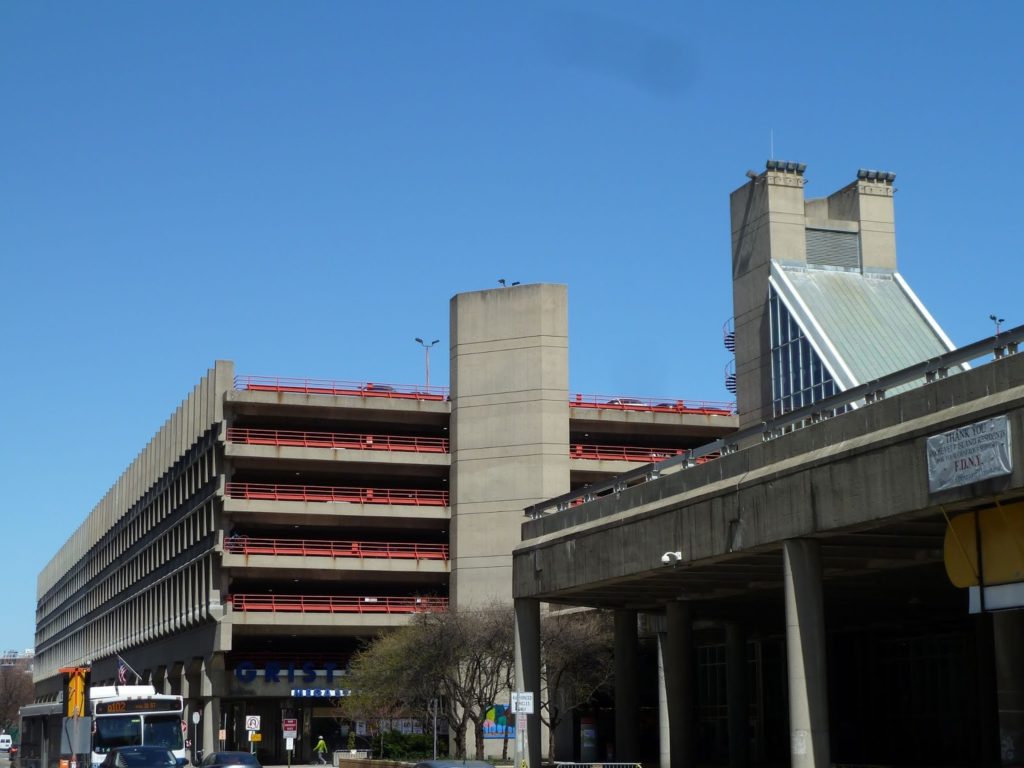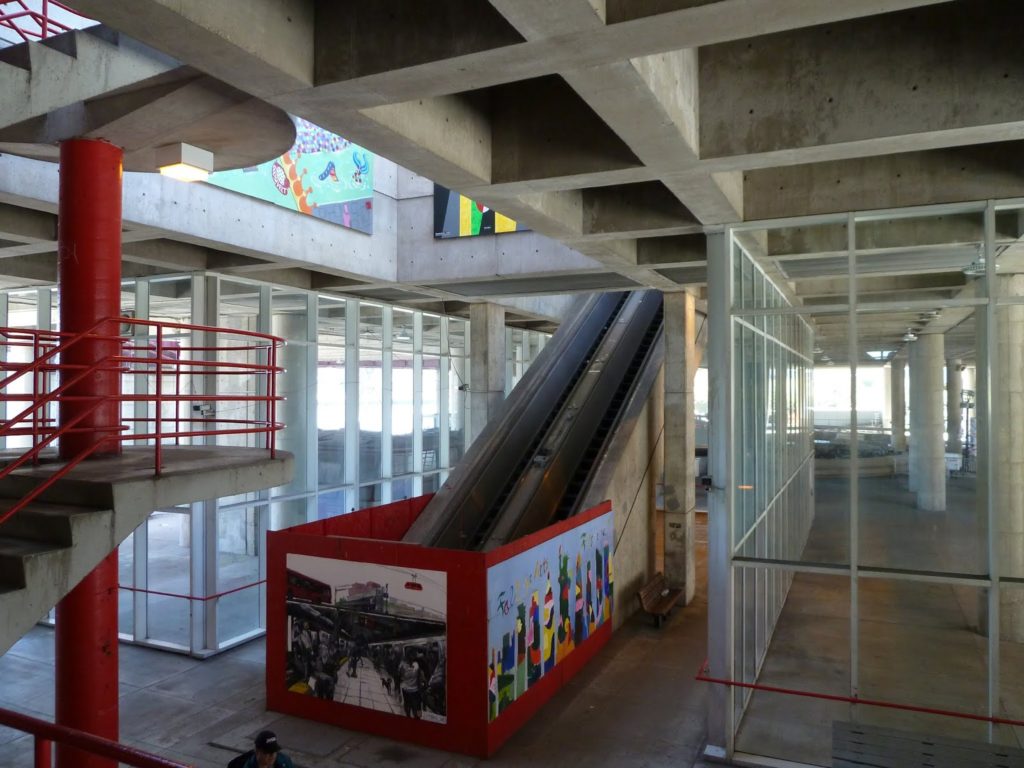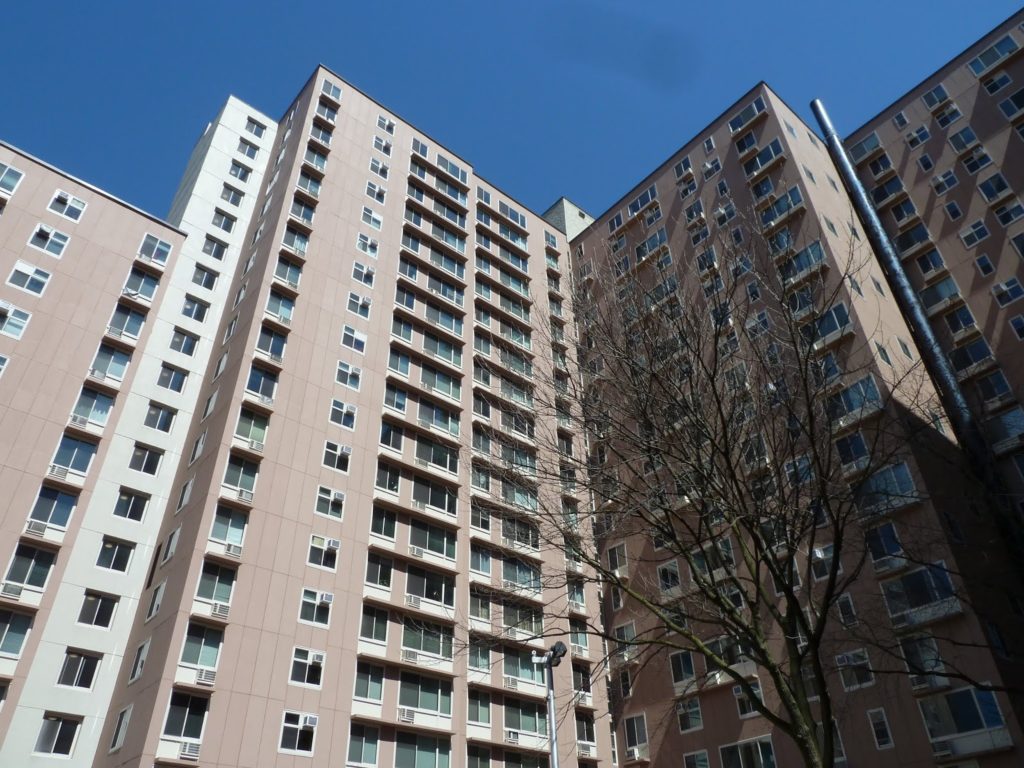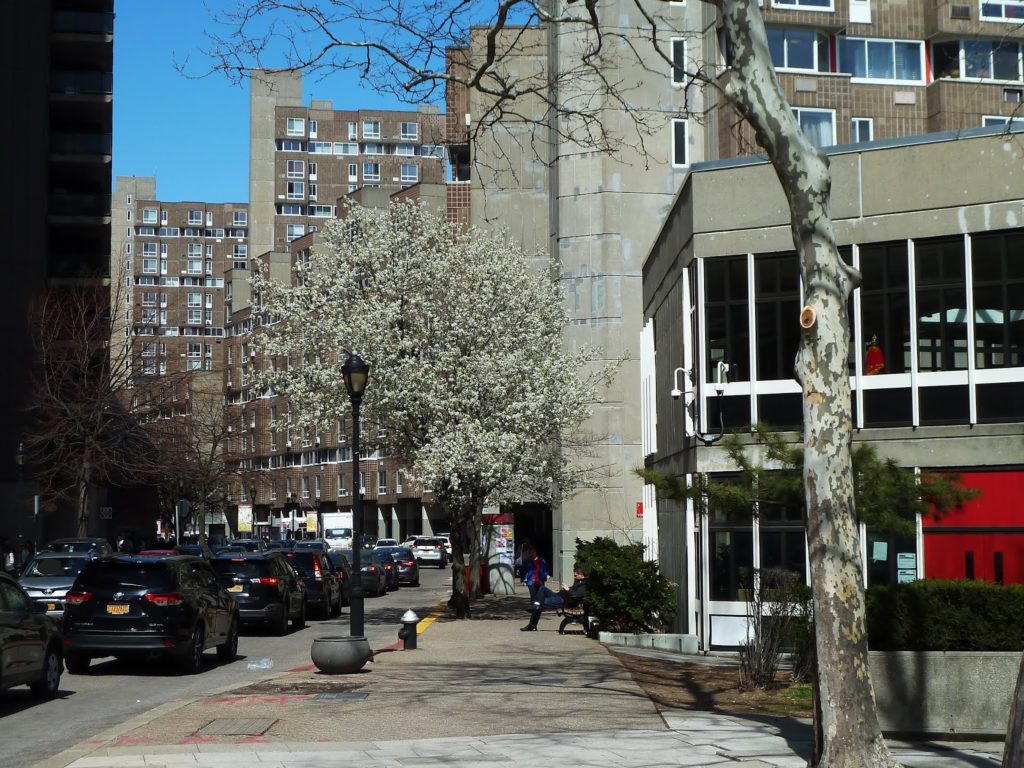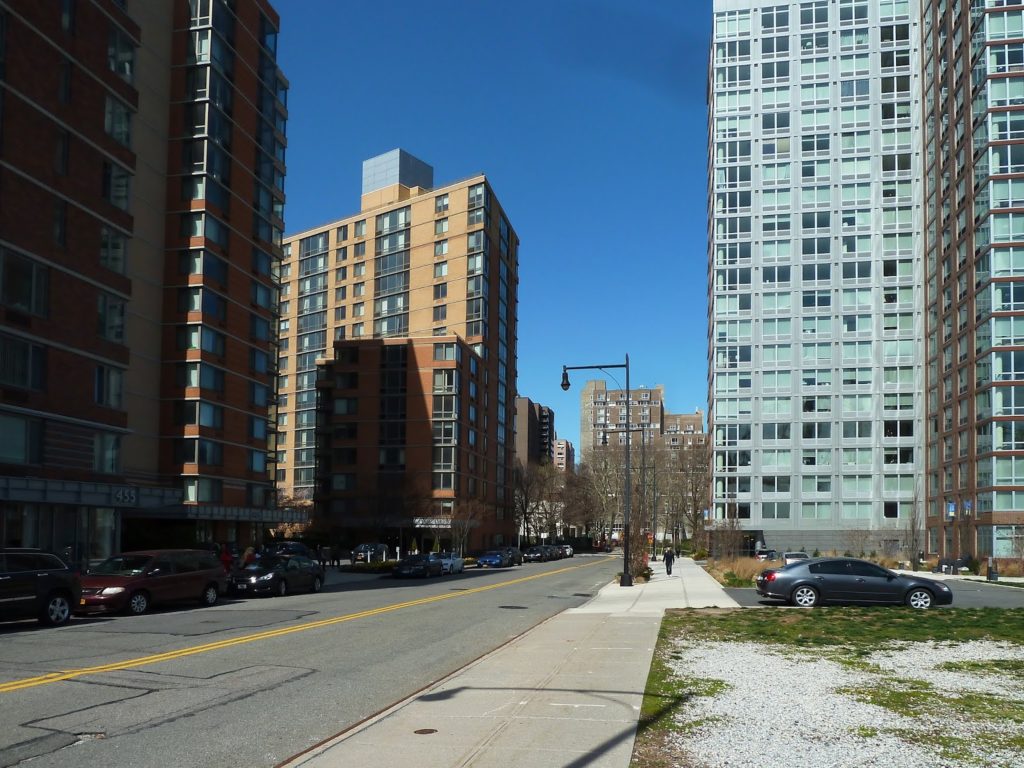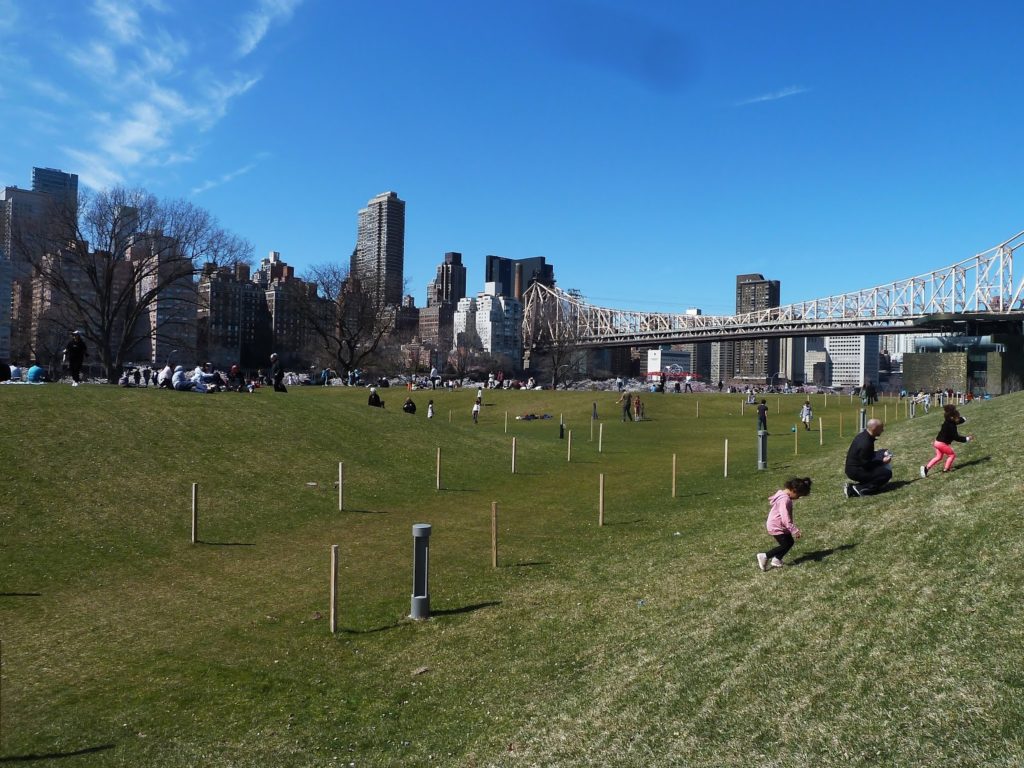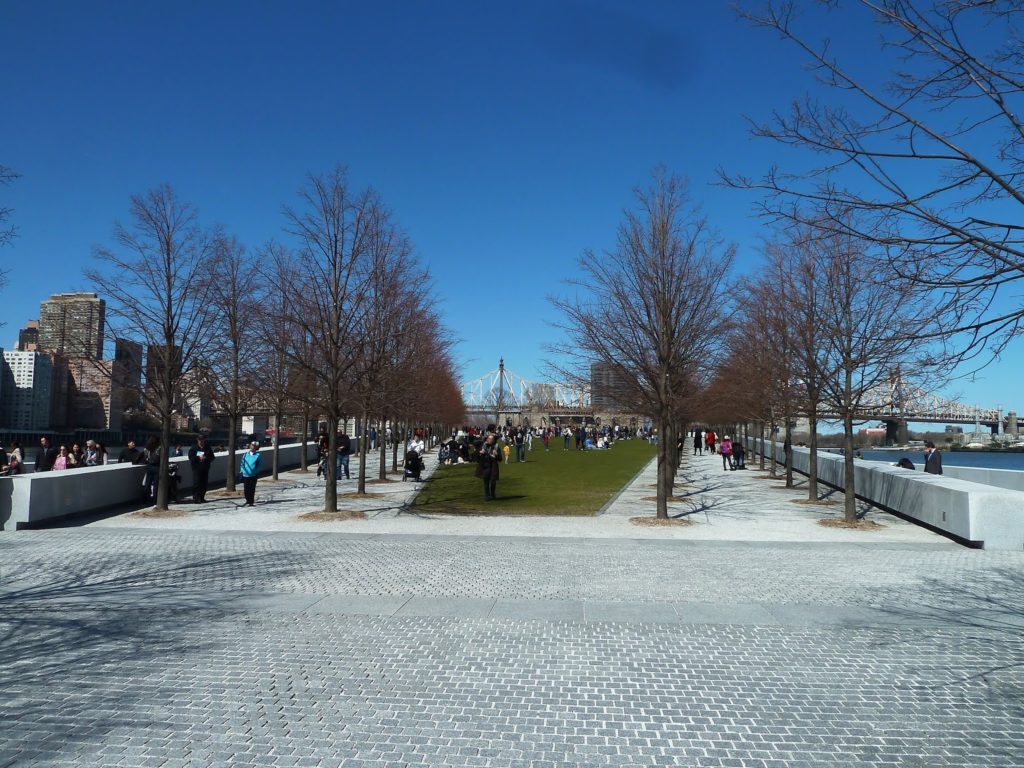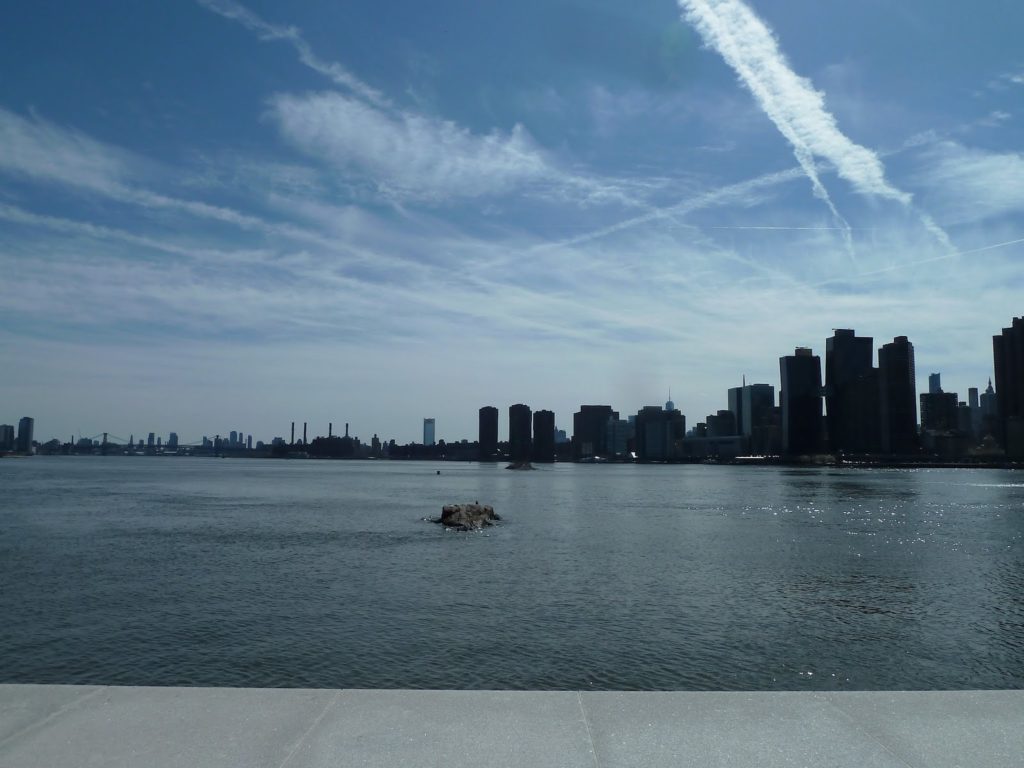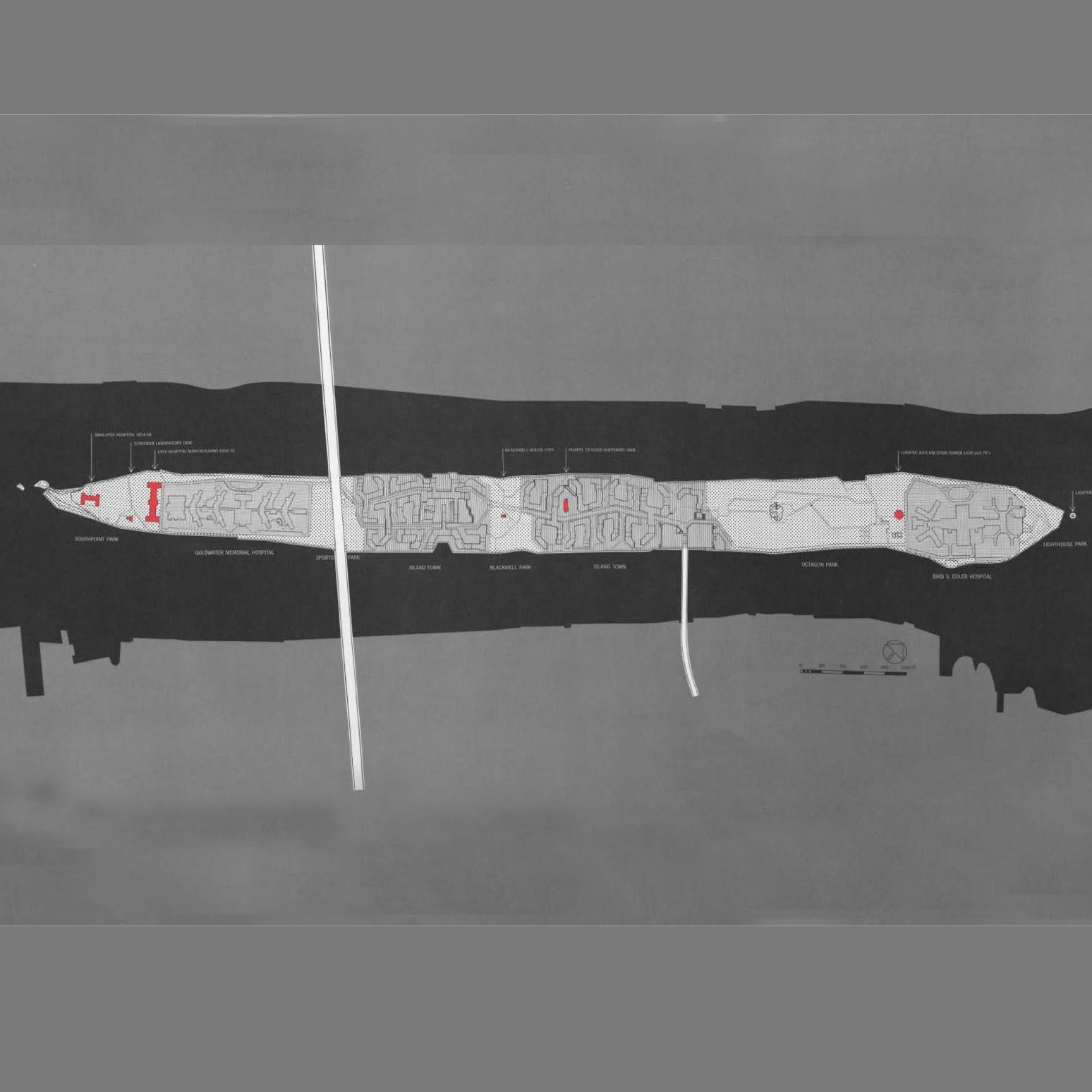This article is part of Never Modern, a series curated by Hidden Architecture where we explore the conditions of several urban projects from 1950s onwards that, starting from the hypothesis of the Modern Movement, they surpassed its orthodoxy to adapt the urban features to local conditions.
Este articulo es parte de Never Modern (Nuca Modernos), una serie comisariada por Hidden Architecture donde exploramos las condiciones de varios proyectos urbanos de 1950 en adelante en los que partiendo de las hipótesis del Movimiento Moderno, se superaron la ortodoxia de varios postulados para adaptar sus características urbanas a las condiciones locales.
This is no longer my island. / Ésta ya no es mi isla.
Philip Johnson
***
Ambiguity/ Ambigüedad
***
Located between Manhattan and Long Island City (the west area of Queens), Roosevelt Island is in between two forms of understanding the city. Manhattan: order, pre-established method, constant and intensive growth. Long Island City (LIC): oscillation, resilience, a land that can be adapted to the needs that Manhattan has outsource without adapting its own entity. Formerly, it was built by factories and warehouses; currently it is growing through generic residential towers that lack a stable residential urban fabric, a kind of extension of Manhattan n without incorporating any of its metropolitan characteristics. Beyond LIC: Queens, a large residential area with a small scale and low density peripheral urbanism.
Localizada entre Manhattan y Long Island City (el área más al oeste de Queens), Roosevelt Island se dirime entre dos más maneras de entender la ciudad. Manhattan: orden, método preestablecido y un crecimiento constante e intensivo. Long Island City (LIC): oscilación, resiliencia, un terreno que se va adaptando a las necesidades que Manhattan necesita externalizar en cada momento sin adoptar una entidad propia. Antiguamente, fábricas y almacenes; en la actualidad, torres residenciales genéricas sin un tejido urbano residencial estable, una especie de extensión de Manhattan sin haber incorporado ninguna de sus características metropolitanas. Más allá de LIC: Queens, un gran área residencial donde se desarrolla un modelo periférico de pequeña escala y baja densidad.
Roosevelt Island, halfway between these two realities, intends to be a threshold to the city, a transition between an intensive urbanism and an extensive one. However, this island has become a metropolitan rara avis. A strange place that plays with several realities at the same time trying to incorporate them without opting for any of them. Its urban layout is ambiguous, its forms of access, both by car and by public transport, are ambiguous and its building typologies are ambiguous or simply contradictory with its own intrinsic morphology.
Roosevelt Island, a medio camino de estas dos realidades, pretende ser un umbral de entrada a la ciudad, una transición entre un urbanismo intensivo y otro extensivo. Sin embargo, esta isla se ha convertido en un rara avis metropolitano. Un lugar extraño que juega con varias realidades al mismo tiempo tratando de incorporarlas sin querer decantarse por ninguna de ellas. Su trazado urbano es ambiguo, sus formas de acceso, tanto en coche como en transporte público, son ambiguas y sus tipologías edificatorias son ambiguas o simplemente contradictorias con su propia morfología intrínseca.
***
Transition/ Transición
***
The metropolitan history of Roosevelt Island began in 1825 with the name of Blackwell Island. The City of New York bought the island to the family Blackwell to install a prison, a cemetery and an asylum, facilities that Manhattan needed to have but was not able to build them within its limits. In 1909, the construction of Queensboro Bridge started to change the approach of new Yorkers to the island. The bridge crossed the island without providing access to it, but people started to realize the proximity of the island to the cities and its possibilities of development.
La historia metropolitana de Roosevelt Island comienza en 1825 bajo el nombre de Blackwell Island. La ciudad de Nueva York compra la isla a la familia Blackwell para instalar una prisión, un cementerio y un manicomio, instalaciones de las que Manhattan necesitaba abastecerse pero no era capaz de construirlas dentro de sus límites. En 1909, tras la construcción del puente de Queensboro que la atraviesa sin permitir acceder a ella, los neoyorquinos empiezan a tener conciencia de la cercanía a la ciudad y sus posibilidades.
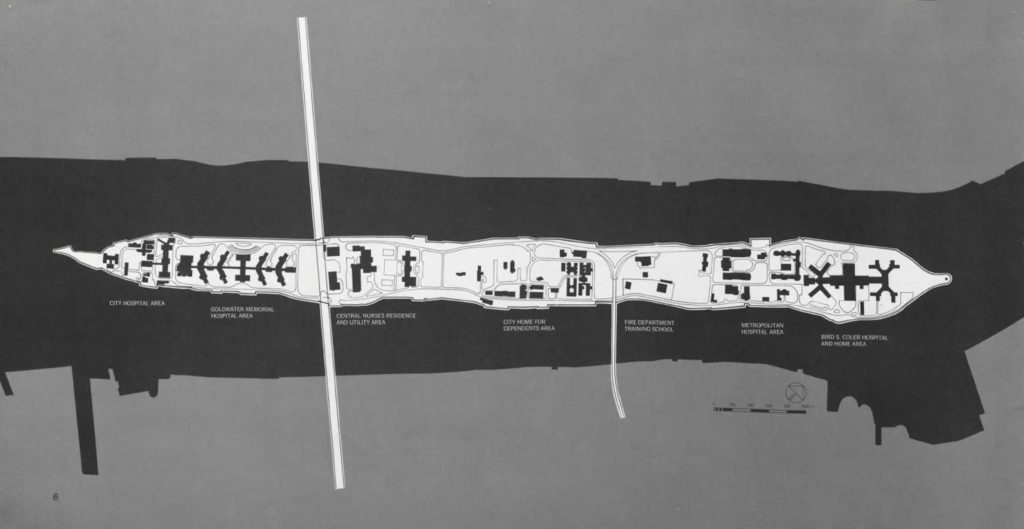
In 1930, after changing the name of the island to Welfare Island, a car lift was built from the Queensboro bridge and it started to have restricted access to the island by car. In 1955, the island was fully opened to cars with the construction of Welfare Island bridge that connected the city with Queens. It was the final transition to a metropolitan environment.En 1930, tras haber cambiado el nombre de la isla a Welfare Island, se construye un ascensor de vehículos desde el puente de Queensboro que permitió un acceso restringido en coche. En 1955 la isla se abrió totalmente al tráfico con la construcción del puente Welfare Island que la unió con Queens. Sería el final de la transición de Roosevelt Island hacia un entorno metropolitano.
***
Speculation/ Especulación
***
In the 1960s, after the construction of the bridge the idea of developing the island with a large master plan was taking shape. This plan was part of Robert Moses urban approach to the city of New York. One of the first proposals was from the architect Victor Gruen, the father of the shopping mall. He designed a large platform that would have covered the entire island and would be equipped with public facilities and commercial areas. A series of towers with different housing typologies for a total of 70,000 people would have grown from the platform. His proposal was rejected because the city was afraid to give to a single developer the entire construction of the island.
En la década de 1960, tras la construcción de este puente se consolida la idea de transformar la isla con un gran plan de desarrollo urbanístico que fuera parte de la regeneración urbana que estaba ocurriendo en Nueva York, principalmente bajo los planteamientos de Robert Moses. Una de las primeras propuestas fue la del arquitecto Victor Gruen, el padre del shopping mall. Proyectó una gran plataforma que cubriría toda la isla y que pretendía albergar distintos equipamientos públicos y zona de comercio desde donde crecerían una serie de torres residencias con distintas tipologías habitacionales para un total de 70.000 habitantes. Su propuesta sería rechazada principalmente por el miedo de la ciudad a entregar toda la isla a un único promotor.


As an act of propaganda and to encourage its development, in 1963, the city announced that the island would have a subway station. It would not open until 1989.
Como acto propagandístico y para fomentar su desarrollo, en 1963, se anuncia que se conectaría la isla con la ciudad mediante una línea de metro. La parada de metro no abriría en Roosevelt Island hasta 1989.
In 1966, the mayor Lindsay formally announced a new development to the island and the progressive demolition of the hospitals that were built at that moment. The Urban Developed Corporation is created and, three years later, they submitted a first draft with different development options to the island. The land was ceded for residential use for the following 99 years and the architects Philip Johnson and John Burgee were commissioned to develop a new urban plan for 20,000 people
En 1966, el alcalde Lindsay anuncia formalmente un nuevo desarrollo urbana para la isla y ordena la demolición progresiva de los hospitales que estaban construidos en ese momento. Se crea la organización Urban Developed Corporation (UDC) y tres años más tarde entregan un primer borrador ofreciendo diferentes opciones para su desarrollo urbano. Finalmente se ceden los terrenos para su uso residencial durante los próximos 99 años y se encarga a los arquitectos Philip Johnson y John Burgee realizar un masterplan para 20.000 nuevos residentes.
***
Innocence/ Inocencia
***
That same year, Johnson and Burgee presented their proposal for Roosevelt Island in the book that was called The Island Nobody Knows where they exposed in a rational and chronological order the approach of the urban project.
Ese mismo año, Johnson and Burgee presentan su propuesta para Roosevelt Island bajo el formato de libro que denominan The Island Nobody Knows (La Isla que nadie conoce) exponiendo de un modo racional los planteamientos que guían su proyecto urbano.

The proposal selected several monuments and historical buildings that the architects wanted to preserve and analyze the different programs that the island could accommodate. Finally, Johnson and Burgee designed an urban plan with the premise of creating a new town within New York City. The project unfolds with two contradictory approaches and an innocent attitude to the speculative dynamics of the urban development of New York.
Tras seleccionar una serie de monumentos y edificios históricos que desean mantener y analizar las distintas posibilidades programáticas que la isla podría albergar, los arquitectos realizan una propuesta urbana bajo la premisa de crear un nuevo municipio dentro de la ciudad de Nueva York. Es aquí donde el proyecto de Johnson y Burgee se desdobla con dos planteamientos contradictorios entre sí y una actitud inocente acerca de las dinámicas especulativas de desarrollo urbano que afectan a una ciudad como Nueva York.
On the one hand, they proposed to divide the island in five programmatic bands that would accommodate parks and four bands of housing buildings allowing as many open areas as possible. On the other hand, the architects design a picturesque urban project with a sinuous central street that creates surprise with visual changes and connects the four building areas. The relation between the five parks with views to Manhattan and Queens is done through a theoretical segmentation of the landscape assuming that visuals of Manhattan can be divided.
Por un lado, proponen dividir la isla en cinco bandas de parques y cuatro bandas de edificación que se intercalan entre sí para permitir el mayor número posible de zonas abiertas posibles. Por otro lado, los arquitectos plantean un proyecto urbano pintoresco con una calle central sinuosa que genere sorpresa mediante cambios visuales y conecte las cuatro zonas edificadas. La relación de las 5 bandas de parque con las vistas sobre Manhattan y Queens se realiza a través de una teórica segmentarización del paisaje partiendo de la base que las visuales sobre Manhattan pueden fraccionarse.
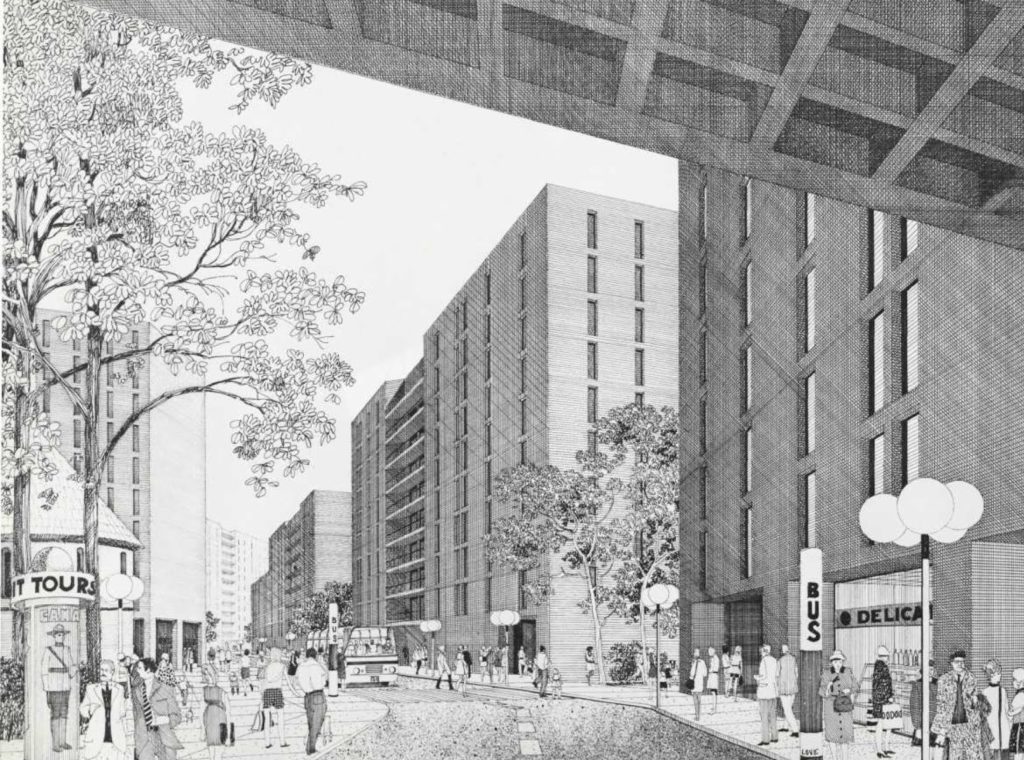
However, the proposal fails in its temporal approach and the capitalist dynamics that stimulate the city. After the construction of the first public and residential buildings by Kallman & McKinell and Josep Lluis Sert that had an spatial and material ambition, a series of uninteresting buildings started to be build. These new projects also frayed the urban fabric of Johnson and Burgee: The importance of the central street disappears and the city turns towards the limit of the island destroying the commercial area of the central spine. Finally, the opening of the cable car in 1976 and the subway in 1989 finished blurring the planned circulation.
Sin embargo, la propuesta falla en su planteamiento temporal y las dinámicas capitalistas que estimulan a Nueva York. Tras las construcción de los primeros edificios públicos y residenciales por parte de Kallman & McKinnel y Josep Lluis Sert que mostraban una ambición tanto espacial como material, aparecen una serie de edificios de escaso interés y que deshilachan la trama urbana de Johnson y Burgee: La importancia de la calle central desaparece y la ciudad se vuelca hacia los límites de la isla destruyendo el comercio de la calle central. Por último, la apertura del teleférico en 1976 y el metro 1989 terminaron de difuminar el trazado previsto.
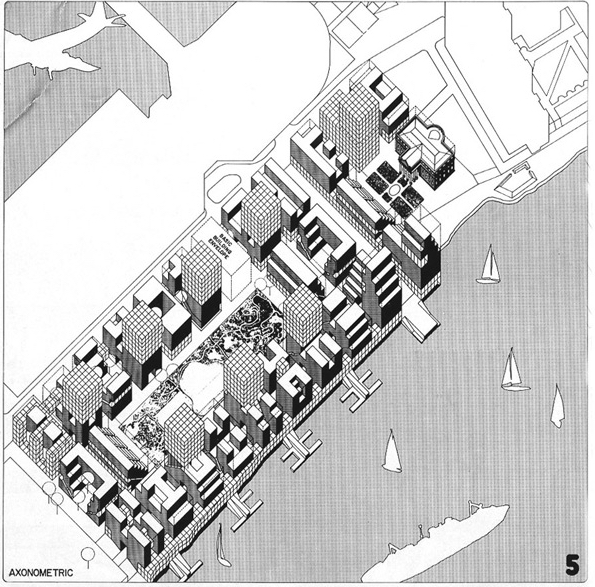
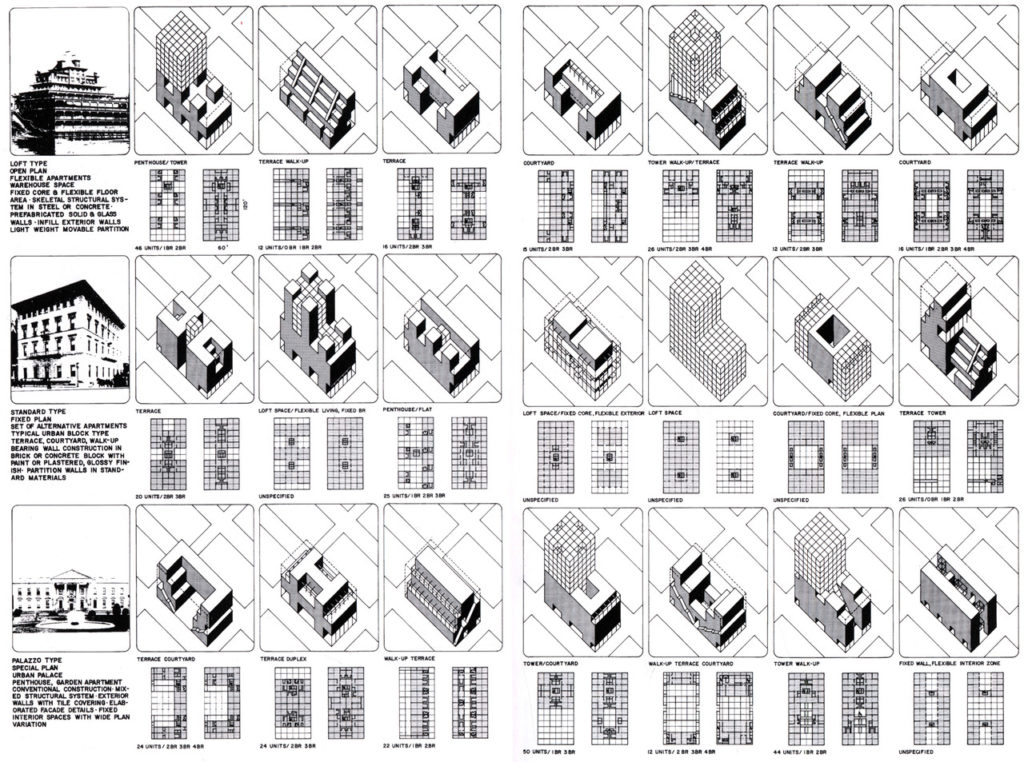
Proposal by O.M. Ungers for Roosevelt Island (1975)
Nevertheless, Roosevelt Island has been positively infected by the provocative aura that has Manhattan and has served as a field of operations for several unbuilt projects. Besides the proposal Rem Koolhaas included in his book Delirious New York, it is important to mention the project that O.M. Ungers presented to occupy on housing lot.
No obstante, Roosevelt Island se ha contagiado ese aura propositiva que envuelve a Manhattan sirviendo de campo de operaciones para varios proyectos no construidos. Aparte de la propuesta de Rem Koolhaas expuesto en su libro Delirious New York, destaca el proyecto que presenta O.M. Ungers para ocupar un solar de viviendas.
***
Purpose/ Propósito
***
Roosevelt Island is an ambiguous island with an unclear urban purpose beyond being a place that is difficult to reach from and to Manhattan what it has turned out as peaceful area. Its tranquility is only disrupted during the spring weekends when New Yorkers go to spend a day outdoors. Its ambiguous essence has become Roosevelt Island in a park (almost a theme park) where you can go to see the sunset over midtown Manhattan, visit the monument of Louis Kahn to Franklin D. Roosevelt, se the cherry blossom during spring or making a barbeque on its northern area. Without a precise program and without a commercial area, you can go walk and leave without extending your leisure for a long time. Maybe, its final pretension is being a non-place as the latest externalized necessity of Manhattan.
Roosevelt Island es una isla ambigua, sin un propósito urbano conciso más allá de ser un lugar difícilmente accesible desde y hacia Manhattan lo que lo convierte en un lugar apacible. Su tranquilidad solo se rompe durante los fines de semana de primavera cuando los neoyorquinos lo utilizan para pasar un día al aire libre. Es su característica ambigua lo que lo ha convertido en un parque (casi de atracciones) en el que uno puede ir a observar la puesta de sol sobre el midtown de Manhattan, visitar el monumento de Louis Kahn a Franklin D. Roosevelt, ver los cerezos en flor en primavera o hacer barbacoa en su vértice septentrional. Sin función precisa y sin una zona comercial establecida uno llega, pasea y se marcha sin poder extender su ocio más allá de un periodo limitado de tiempo. Tal vez su pretensión final sea esa: el lugar sin una función precisa como la última necesidad externalizada de Manhattan.
***
Gentrification/ Gentrificación.
***
However, it seems that the lack of intensity that offers Roosevelt Island can disappear soon after the construction of the new Cornell University Campus. With an interesting urban plan by SOM where they play for the first time with the section of the island creating different panoramic views to different heights and a series of harmless buildings, Roosevelt island is starting to attract a more heterogeneous public that could gentrify the island very soon. Moreover, the speculative pressure that Upper East Side and Long Island City is suffering show a difficult future to the original social targets that were initially proposed. The question is to know if the island, at least, will be able to keep a stable density or if it will grow with glass towers with the same logic that the rest of the waterfront of the city.
Sin embargo parece que la tranquilidad y la falta de intensidad que ofrece Roosevelt Island puede desaparecer con la construcción del nuevo campus de la Universidad de Cornell. Con un interesante masterplan realizado por SOM en el que por primera vez se juega con la sección de la isla creando panorámicas a distintas alturas y una serie de edificios sin mucho interés arquitectónico, Roosevelt Island empieza a atraer a un público cada vez más heterogéneo que hace prever que puede gentrificarse en un futuro cercano. Además la presión especulativa que se está desarrollando a ambos lados de la isla, en el Upper East Side y el LIC ofrecen un futuro gris en cuanto a los propósitos sociales que se plantearon inicialmente. La duda reside en sí será al menos capaz de mantener un densidad estable o está condenada a densificarse mediante grandes torres de vidrio como le está sucediendo al resto de los márgenes de la ciudad.
***
All color images by Hidden Architecture
Literature:
The Island nobody Knows – Philip Johnson and John Burgee. 1969
History of Robert Moses
Article by NYC Urbanism
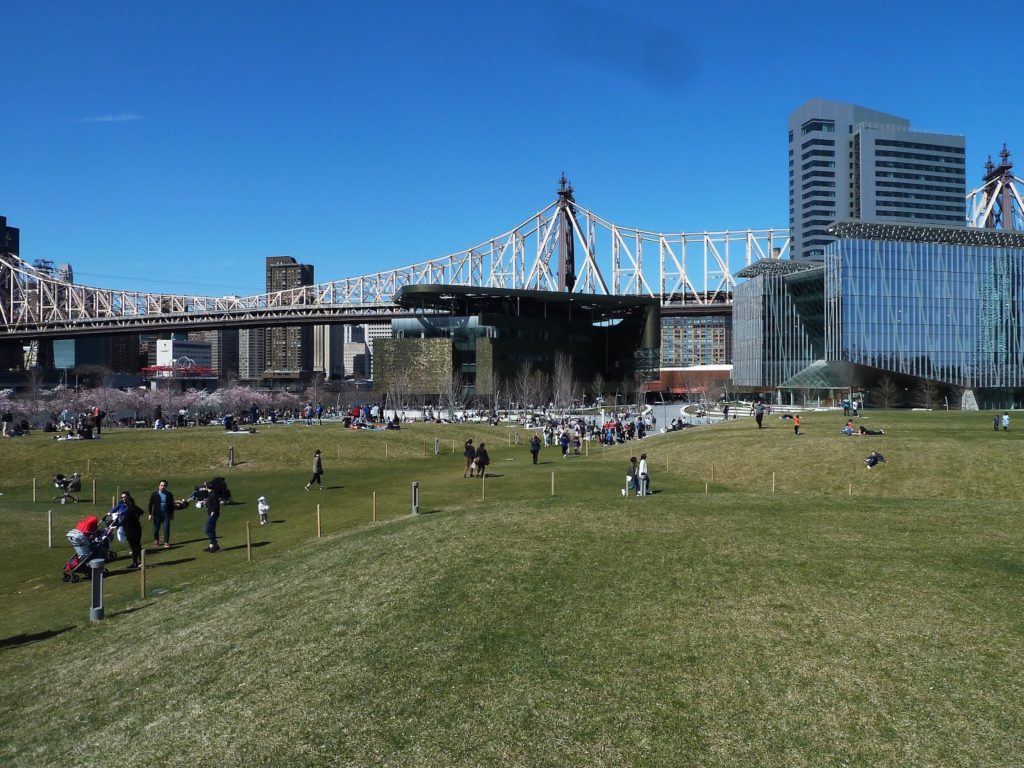
Drawings by Philip Johnson and John Burgee

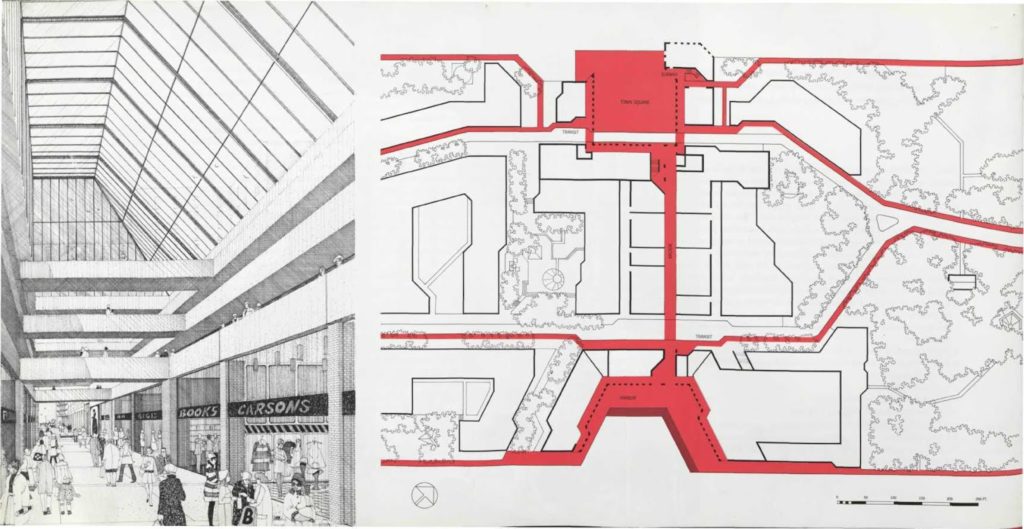
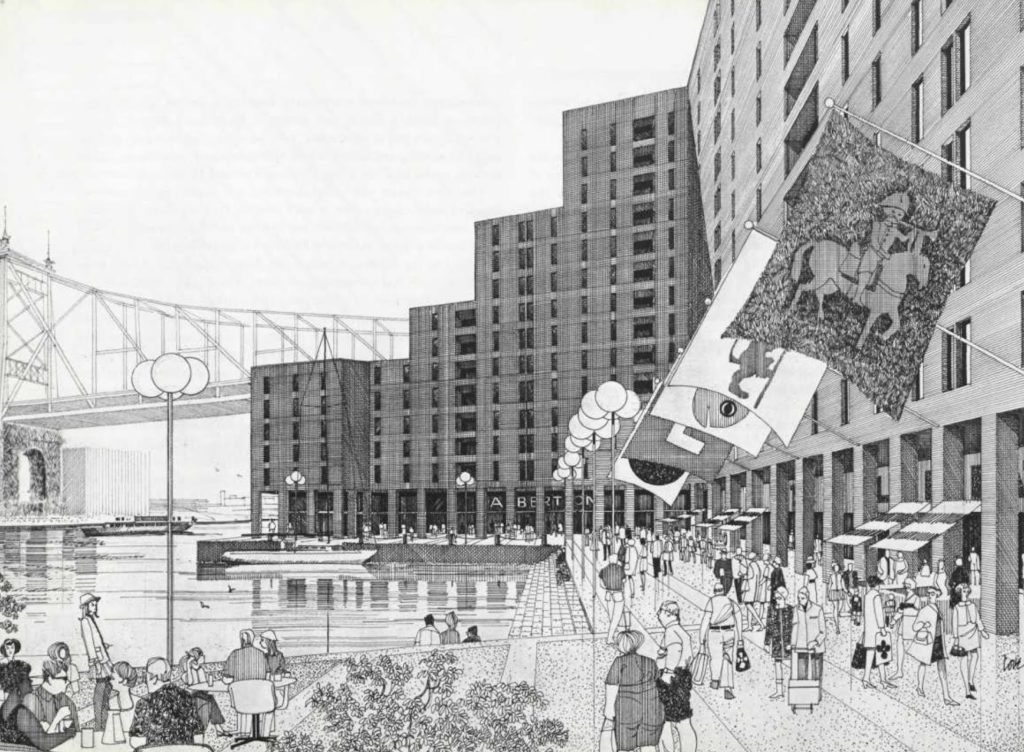
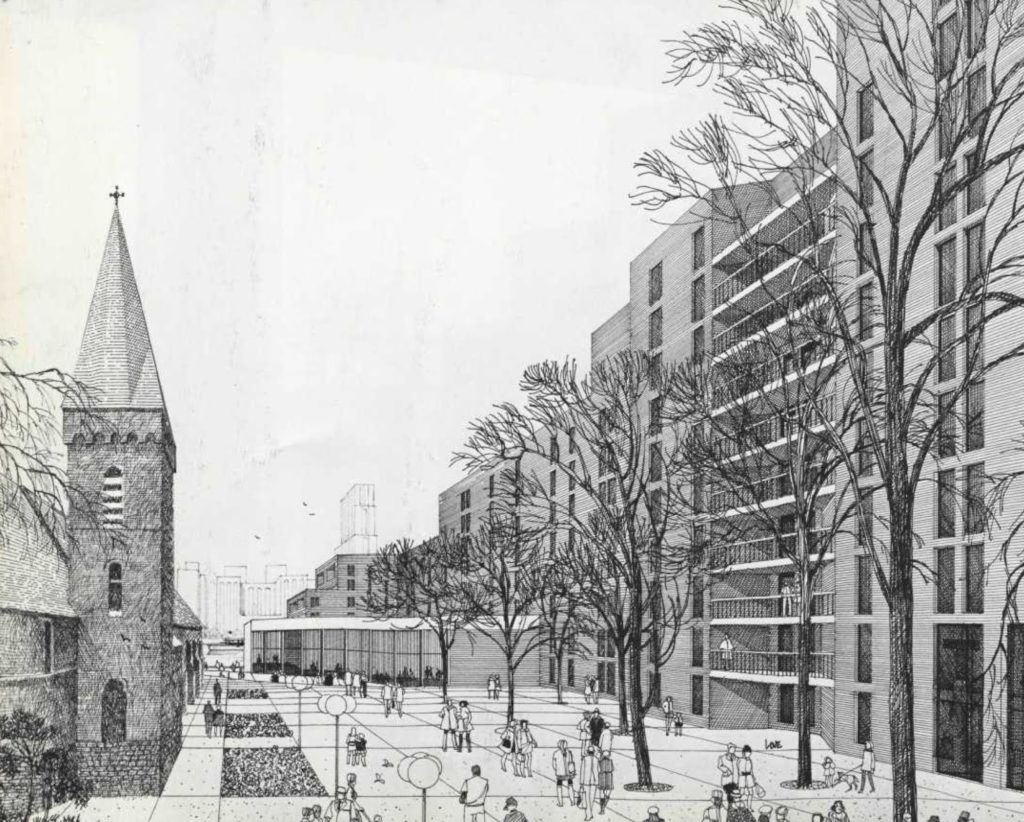
Project by Josep Lluis Sert for Roosevelt Island (1976)
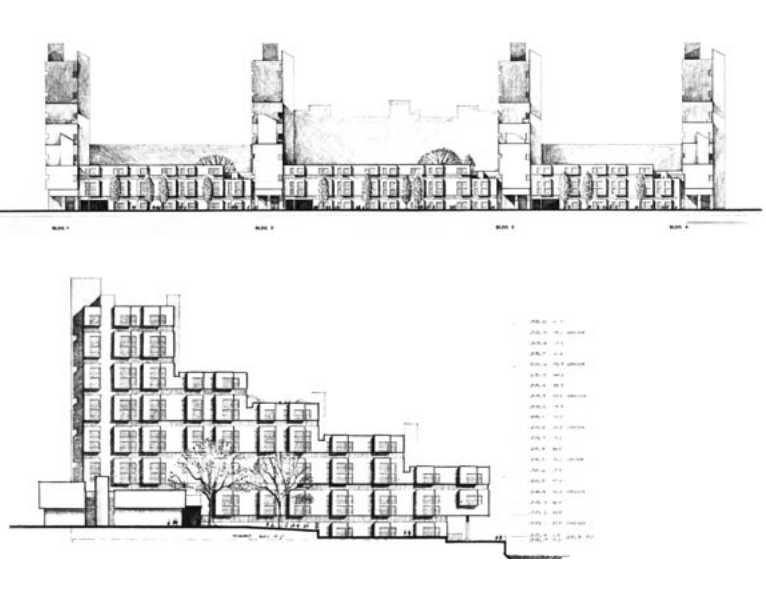
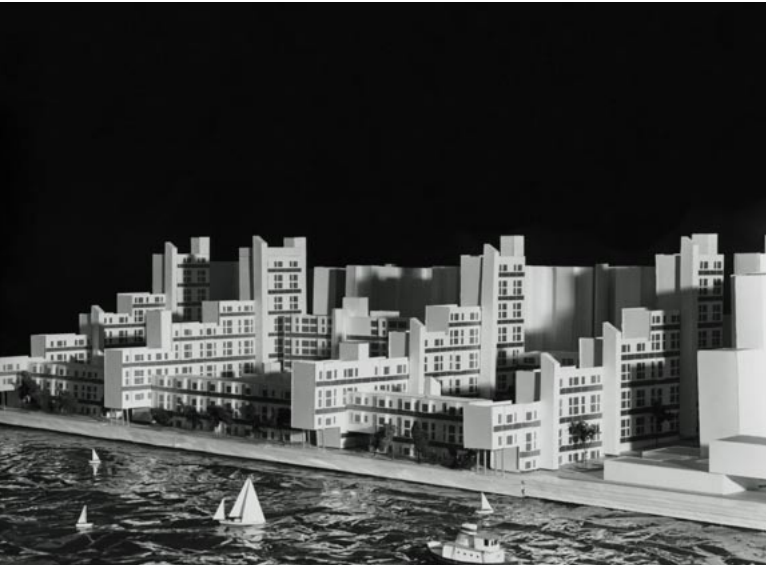
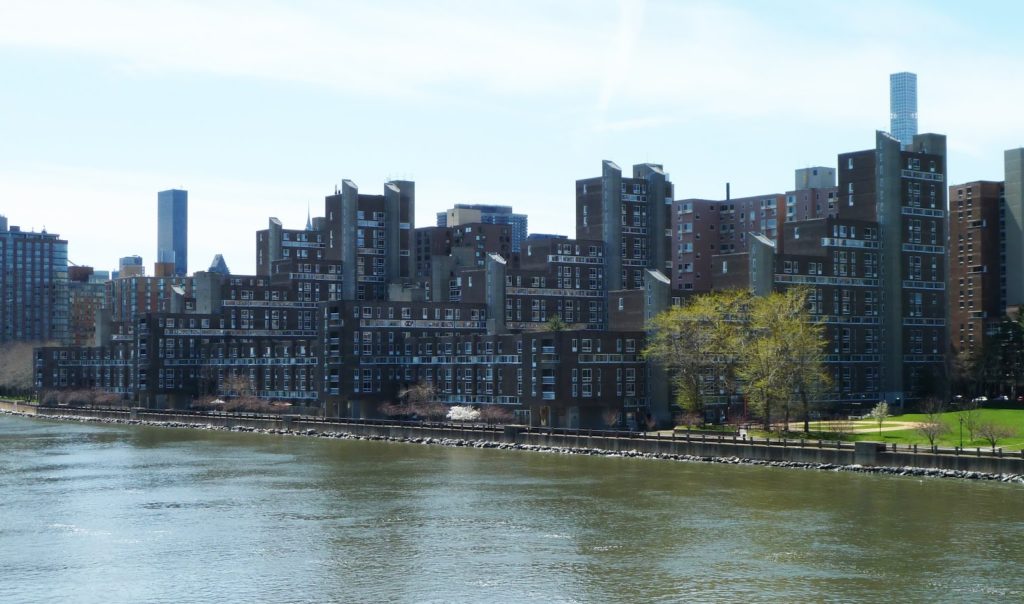
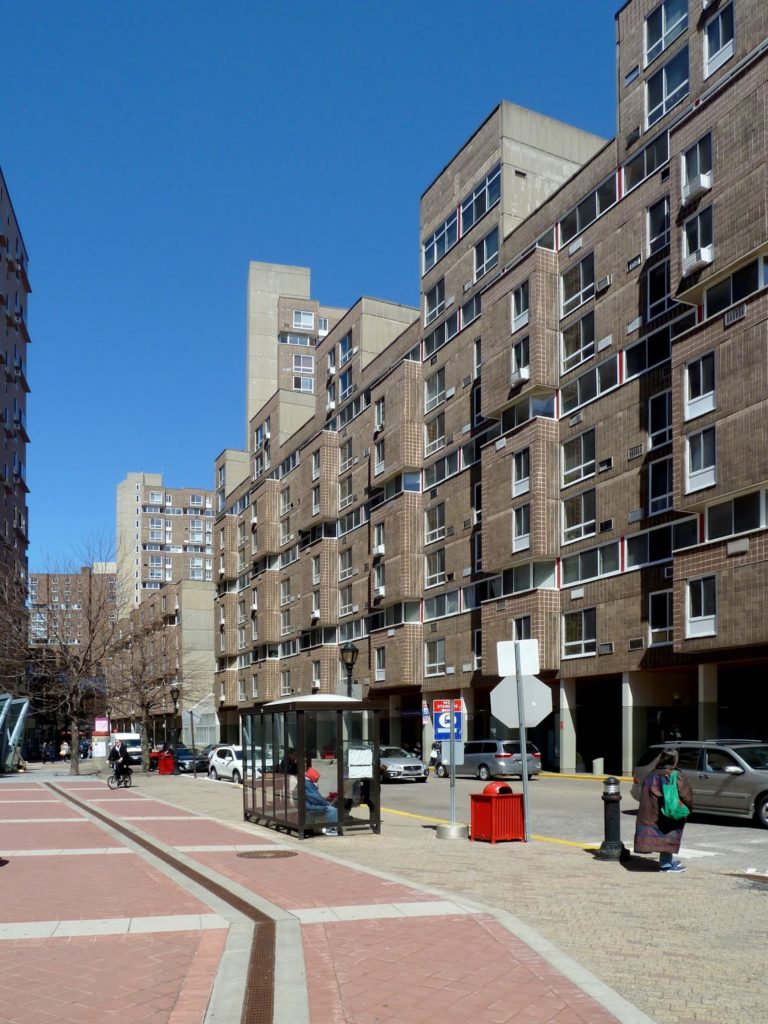
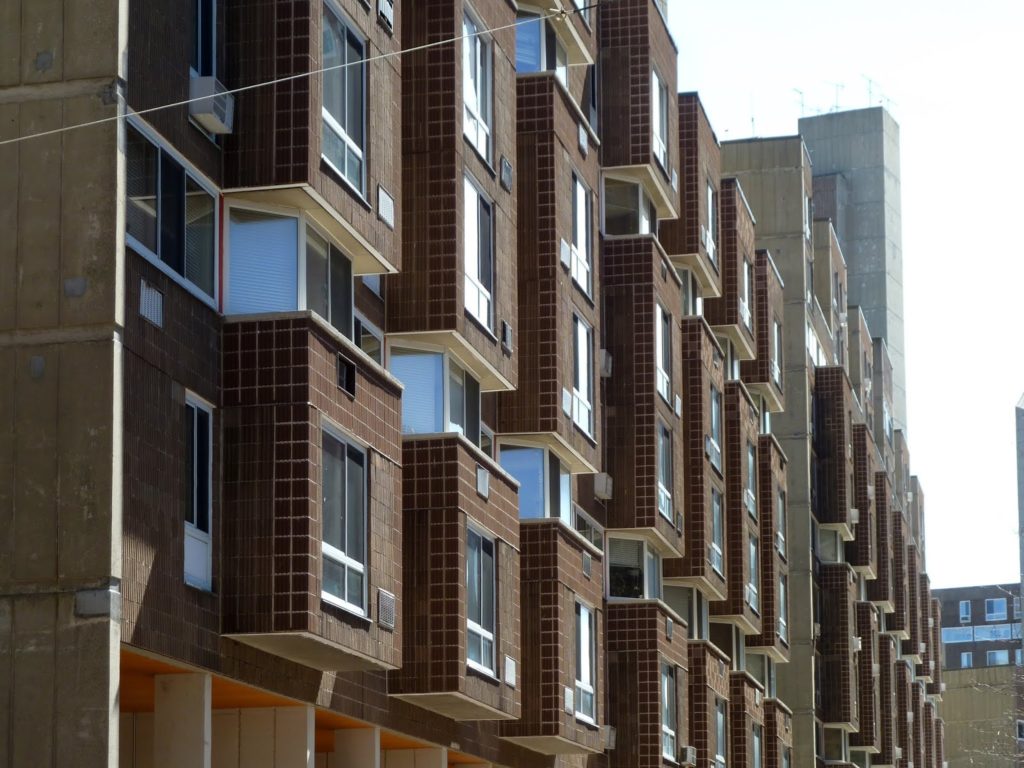

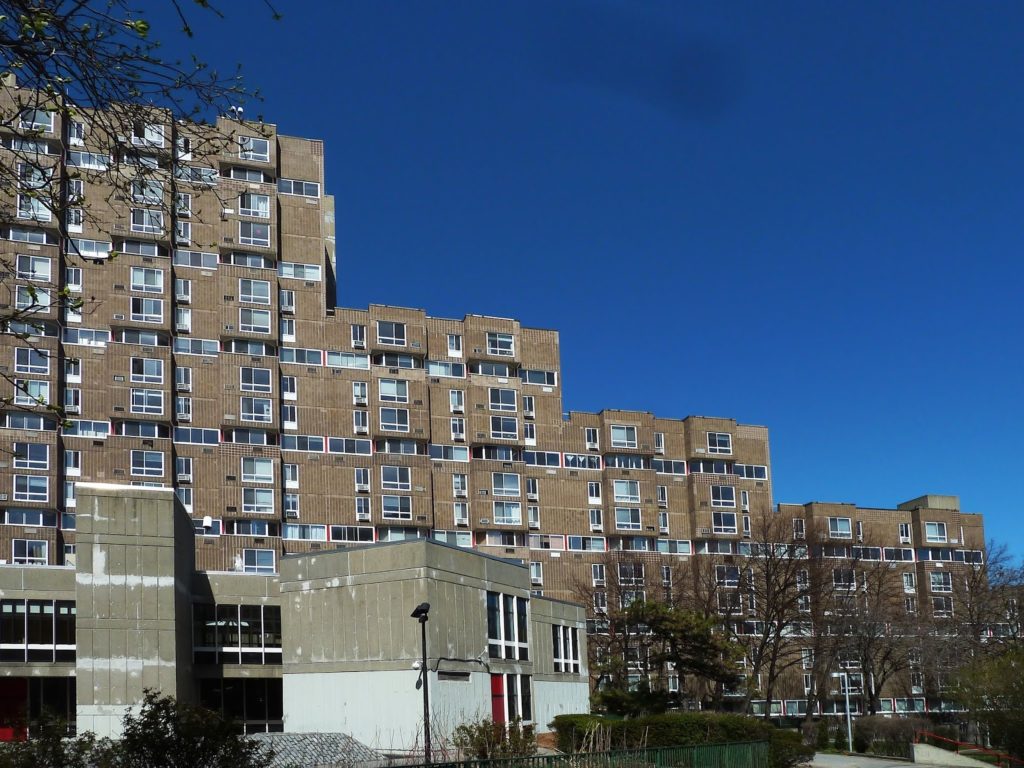
Other buildings
